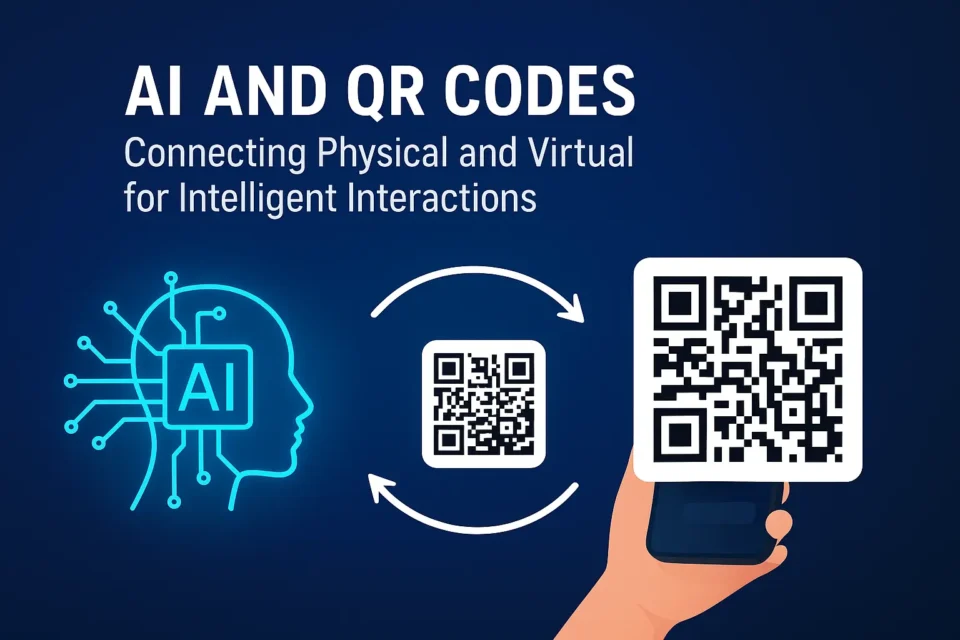Artificial Intelligence (AI) is transforming how we engage with data, commodities, and one another. From computer vision to natural language processing, AI technologies are seeping into every aspect of our existence. But sometimes the most revolutionary innovation isn’t created through new inventions but through combining existing ones in a novel and fresh way.
One such combination that is picking up steam is AI-driven experiences tied together through QR codes. Although QR codes as technology exist, the intelligence behind what happens after scanning one are evolving extremely rapidly.
The Limitations of Static QR Codes
Historically, QR codes are simple gateways: you scan, and they will lead you to a static URL or display a static piece of information. The problem? They can’t react in real-time, and their utility decays with changing content.
For example, a QR code on a packaging can be linked to a manual. That is convenient but the same link refers to all and each customer whether it is the first time to purchase or maybe in the future just returning for more advanced advice.
Without behind them the AI, the QR codes can be useful but not so smart.
AI Makes QR Codes Smart
The real magic begins when AI steps in to turn QR code interactions into dynamic, personalized, and context-aware interactions. Here’s how:
Adaptive Content Delivery
With a QR scan, AI systems can pick up on factors like time of day, user history, location, or device type and present targeted content. A coffee cup, for instance, may contain a QR code that results in an AI-driven recommendation system suggesting drinks based on previous purchase history or the local weather in your area.
Natural Language Interaction
Instead of being driven by static web pages, AI-powered QR codes can trigger chatbots which can understand natural language. A museum could print QR codes next to exhibits; scanning them would open up an AI guide that will answer your questions aloud rather than showing plain text.
Predictive Maintenance & IoT Integration
In industries, QR tags on machinery can connect to AI systems that analyze real-time IoT sensor data. Scanned, they can not just unveil a manual but also send predictive maintenance alerts based on AI analysis.
Multilingual and Accessibility Features
Translation using AI can instantly translate QR-linked information into a user’s preferred language or reading level. Similarly, it can generate audio descriptions for visually impaired users.
Real-World Example: AI-Personalized Learning
Picture an educational publisher integrating AI and QR codes into textbooks. Each chapter ends with a QR code—scan it and opens up an AI tutor that adjusts questions based on your past answers, identifies areas you must improve on, and even generates individualized exercises on the fly.
Such a system makes the QR code from an inert link to an active gateway to continuous, personalized learning.
Also check: Top 10 Android Scanner Apps
Creating and Managing AI-Powered QR Codes
To create such smart experiences, businesses can combine two key tools:
Dynamic QR Code Platforms: These allow you to change the linked content without re-printing the code, permitting flexibility.
AI Backends: Systems like ChatGPT, custom machine learning models, or AI recommendation systems take the context of the user and decide what to serve.
In combining, the QR code is just the catalyst—the AI does the heavy lifting making the experience smart.
Privacy and Ethics in AI-QR Interactions
Transparency and consent are required for all AI-powered personalization. Users must be informed about what data is gathered after the scan and how it will be utilized. Ethical QR-AI combinations must:
- Offer transparent consent prompts.
- Keep personal data that is not needed out of storage.
- Make sure the decision-making of the AI is explainable.
Establishing trust in such systems is paramount if AI-powered QR codes are going to make it mainstream.
The Future: Hyper-Personalized Physical-Digital Bridges
We’re moving toward a world where physical objects—product packaging, posters, business cards—are not static entities but portals to dynamic, AI-powered experiences. AI-powered QR codes could someday:
- Offer real-time product price comparisons as you shop.
- Connect you directly to live AI customer support representatives.
- Guide tourists through hyper-local recommendations as they stroll through a metropolis.
Essentially, they will blur the boundaries between physical and digital realms in a natural, immediate, and extremely relevant manner.
Final Thoughts
QR codes were always a connection—but when mixed with AI, they’re not just a link. They’re sentient, adapting bridges between both the offline and online universes. The businesses and creators who harness this pairing will not only build compelling crowds, but also experiences that feel really personal and intelligent.


